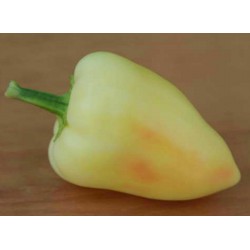Menu
-
MenuVissza
- Home
-
Kategóriák
-
-
Kategóriák
-
Zöldségmagok
-
Fajták országonként
- Fajták Örményország
- Fajták BiH
- Fajták Horvátországból
- Fajták Franciaországból
- Varieties from Germany
- Varieties from Greece
- Varieties from Hungary
- Fajták India
- Varieties from Italy
- Fajták Japánból
- Fajták Észak-Macedónia
- Varieties from Peru
- Varieties from Russia
- Varieties from Serbia
- Szlovéniából származó fajták
- Varieties from Spain
- Varieties from Thailand
- Fajták Törökország
- Varieties from USA
- Paradicsommag
- Kukoricamag
- Tök család magjai
- Babcsalád
- Uborka mag
- Paprikamag
- Sárgarépa család
- Hagyma család
- Saláta magok
- Burgonya család
- Káposzta család
- Retekmag
- Cékla család
- Görögdinnye magok
- Dinnye magok
- Karfiolmag
- Napraforgó család
-
Fajták országonként
- Gyümölcsmag
- Chili paprika magok
- Gyógynövénymagok
- Hegymászó növények magjai
- Fák - cserje - magok
- Pálma mag
- Díszes fűmagok
- Dohánymagok
-
Zöldségmagok
-
-
-
-
- ÚJ TERMÉKEK
- Fiók létrehozása
- Szállítás - fizetés
- FAQ
Last Product Reviews
Out of the two seeds, one germinated and the other one was dead and floatin...
By
 Riikka H on 07/03/2024
Riikka H on 07/03/2024
Verified Purchase
80 termék található.
46-60 / 80 elem mutatása

Szerbiából származó fajta
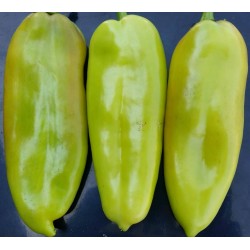
DUKAT Sweet Pepper Seeds
Ár
1,65 €
(SKU: PP 59)
Seeds Gallery EU,
5/
5
<div class="container">
<div class="row">
<div class="col-12">
<h2><strong>DUKAT Sweet Pepper Seeds</strong></h2>
<h2 class=""><span style="color: #ff0000;"><strong>The price is for a pack of 50 seeds.</strong></span></h2>
<p>The paprika variety "Dukat" is excellent for baking and eating in fresh form and it is one of the favorite varieties in Serbia. Similar to the variety "<a href="https://www.seeds-gallery.shop/en/home/elephant-s-ear-sweet-pepper-seeds.html" target="_blank" title="Slonovo Uvo" rel="noreferrer noopener">Slonovo uvo</a>", with a little longer vegetation. The fruits reach a length of 25 cm, flesh very thick 6-7 mm. The variety is very fertile, gives up to 2 kg per plant, especially if it is grown in the greenhouse. It grows very well in the open.</p>
</div>
</div>
</div>
<script src="//cdn.public.n1ed.com/G3OMDFLT/widgets.js"></script>
PP 59 (50 S)


Szerbiából származó fajta
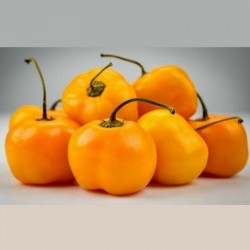
"Jelena" Yellow Sweet...
Ár
1,75 €
(SKU: C 113)
Seeds Gallery EU,
5/
5
<h2><strong>"Jelena" Yellow Sweet Pepper Seeds - large fruits</strong></h2>
<h2><span style="color:#ff0000;"><strong>Price for Package of 10 seeds. </strong></span></h2>
<p>Yellow, thick-walled, sweet fruits add appetizing color and vitamins to fresh salads and are superb for stuffing as well as fresh use. Plants can get quite large, so be prepared to support them, especially when carrying lots of fruit. Ripens green to yellow.</p>
<p><strong>Light requirements:</strong> Full sun.</p>
<p><strong>Planting:</strong> Space 12 to 48 inches apart, depending on type. (See information above for specific recommendations.)</p>
<p><strong>Soil requirements:</strong> Peppers need well-drained, nutrient-rich soil. Amend soil with 3 to 5 inches of compost or other organic matter prior to planting. Soil pH should be 6.2 to 7.0.</p>
<p><strong>Water requirements:</strong> Keep soil consistently moist throughout the growing season. Mulch soil to reduce water evaporation.</p>
<p><strong>Frost-fighting plan:</strong> Pepper is a hot-weather crop. A light frost will damage plants (28º F to 32º F), and temps below 55º F slow growth and cause leaves to look yellowish. If a surprise late spring frost is in the forecast, protect newly planted seedlings with a frost blanket.</p>
<p><strong>Common issues:</strong> Plants drop flowers when daytime temps soar above 90º F. Few pests bother peppers, but keep an eye out for aphids, slugs, pillbugs, and leafminers. Humid weather (especially in gardens with heavy soil that doesn’t drain well) can invite fungal diseases like leafspot.</p>
<p><strong>Storage:</strong> Store unwashed (or washed and dried) peppers in the refrigerator in a loosely closed plastic bag. Moisture is a pepper’s enemy and hastens spoiling. For peak flavor and nutrition, use within a week.</p>
C 113


Szerbiából származó fajta
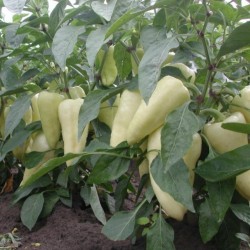
Big Hot White Pepper Seeds
Ár
1,95 €
(SKU: PP 55)
Seeds Gallery EU,
5/
5
<h2 class=""><strong>Big Hot White Pepper Seeds</strong></h2>
<h2><strong><span style="color: #ff0000;" class="">Price for a Package of 50 seeds.</span></strong></h2>
<p>Big Hot White pepper has large fleshy fruits about 30 centimeters in length and an average weight of 120 grams. The plant is strong, grows high and fast, and is suitable for growing in greenhouses and outdoors.</p>
<p>The fruit pericarp has a thickness of 4 to 5 millimeters. The fruits ripen in 50 days. This variety is highly disease-resistant and especially suitable for professional production.</p>
<h3><strong>Variety from Serbia</strong></h3>
<script src="//cdn.public.n1ed.com/G3OMDFLT/widgets.js"></script>
PP 55 (50 S)


Szerbiából származó fajta
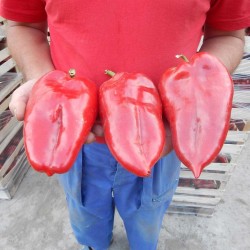
Elefánt fül paprikamag
Ár
2,15 €
(SKU: PP 56)
Seeds Gallery EU,
5/
5
<h2><strong>Elefánt fül paprikamag</strong></h2>
<h2><span style="color: #ff0000;" class=""><strong>Az ár 50 mag csomagolására vonatkozik.</strong></span></h2>
<p>Nagy gyümölcsös, aromás. Az elefántfül Szerbia egyik legkedveltebb szerb fajtája, leginkább "ajvar", "pinđur", töltelék készítéséhez, valamint mélyfagyasztáshoz használják. Jól használható pácoláshoz, grillezéshez, zöldséges ételekhez, húsos ételekhez és salátaként.</p>
<p>Ízében kiváló.</p>
<p>Az Elephant's Ear édes paprika, nagyon nagy és húsos gyümölcsökkel. A gyümölcs színe éréskor sötétzöldről élénkpirosra változik. Eléri a súlyát 150-350gr. Nagyon betegség-ellenálló, és hektáronként 50/60 tonna stabil hozamot biztosít. Ez a fajta alkalmas az üvegházhoz, hideg keretekhez és a szabadban is.</p>
<div>
<p><strong>Big package of elephant ears pepper you can buy here: <span style="font-size: 12pt;"><a href="https://www.seeds-gallery.shop/en/home/paprika-elephant-s-ear-1100-seeds.html" target="_blank" rel="noreferrer noopener"><span style="color: #ff0000;">Click here</span></a></span></strong></p>
</div>
<div>Capsicum (/ˈkæpsɪkəm, also known as peppers) is a genus of flowering plants in the nightshade family Solanaceae. Its species are native to the Americas, where they have been cultivated for thousands of years. Following the Columbian Exchange, it has become cultivated worldwide, and it has also become a key element in many cuisines. In addition to use as spices and food vegetables, Capsicum species have also been used as medicines and lachrymatory agents.<br /><br /><strong>Etymology and names</strong><br />The generic name may come from Latin capsa 'box', presumably alluding to the pods or the Greek word κάπτω kapto 'to gulp'.[4][5][6] The name "pepper" comes from the similarity of the flavor to black pepper, Piper nigrum, although there is no botanical relationship with it or with Sichuan pepper. The original term, chilli (now chile in Mexico) came from the Nahuatl word chīlli, denoting a larger Capsicum variety cultivated at least since 3000 BC, as evidenced by remains found in pottery from Puebla and Oaxaca.<br /><br />The fruit of Capsicum plants have a variety of names depending on place and type. The piquant (spicy) varieties are commonly called chili peppers, or simply "chilis". The large, mild form is called "red (bell) pepper", "green (bell) pepper", or just "bell pepper" (depending on color) in North America and United Kingdom and typically "capsicum" in New Zealand,[8] Australia, Singapore and India. The fruit is called "paprika" in some other countries (although paprika can also refer to the powdered spice made from various capsicums).<br /><br /><strong>Growing conditions</strong><br />Ideal growing conditions for peppers include a sunny position with warm, loamy soil, ideally 21 to 29 °C (70 to 84 °F), that is moist but not waterlogged.[9] Extremely moist soils can cause seedlings to "damp-off" and reduce germination.<br /><br />The plants are sensitive to frost. For flowering, Capsicum is a non-photoperiod-sensitive crop. The flowers can self-pollinate. However, at extremely high temperature, 92 to 100 °F (33 to 38 °C), pollen loses viability, and flowers are much less likely to pollinate successfully.<br /><br /><strong>Species and varieties</strong><br />Capsicum consists of 20–27 species,[11] five of which are domesticated: C. annuum, C. baccatum, C. chinense, C. frutescens, and C. pubescens.[12] Phylogenetic relationships between species have been investigated using biogeographical,[13] morphological,[14] chemosystematic,[15] hybridization,[16] and genetic[11] data. Fruits of Capsicum can vary tremendously in color, shape, and size both between and within species, which has led to confusion over the relationships among taxa.[17] Chemosystematic studies helped distinguish the difference between varieties and species. For example, C. baccatum var. baccatum had the same flavonoids as C. baccatum var. pendulum, which led researchers to believe the two groups belonged to the same species.<br /><br />Many varieties of the same species can be used in many different ways; for example, C. annuum includes the "bell pepper" variety, which is sold in both its immature green state and its red, yellow, or orange ripe state. This same species has other varieties, as well, such as the Anaheim chiles often used for stuffing, the dried ancho (also sometimes referred to as poblano) chile used to make chili powder, the mild-to-hot jalapeño, and the smoked, ripe jalapeño, known as chipotle.<br /><br />Peru is thought to be the country with the highest cultivated Capsicum diversity since varieties of all five domesticates are commonly sold in markets in contrast to other countries. Bolivia is considered to be the country where the largest diversity of wild Capsicum peppers are consumed. Bolivian consumers distinguish two basic forms: ulupicas, species with small round fruits including C. eximium, C. cardenasii, C. eshbaughii, and C. caballeroi landraces; and arivivis, with small elongated fruits including C. baccatum var. baccatum and C. chacoense varieties.<br /><br />Most of the capsaicin in a pungent (hot) pepper is concentrated in blisters on the epidermis of the interior ribs (septa) that divide the chambers, or locules, of the fruit to which the seeds are attached.[19] A study on capsaicin production in fruits of C. chinense showed that capsaicinoids are produced only in the epidermal cells of the interlocular septa of pungent fruits, that blister formation only occurs as a result of capsaicinoid accumulation, and that pungency and blister formation are controlled by a single locus, Pun1, for which there exist at least two recessive alleles that result in non-pungency of C. chinense fruits.<br /><br />The amount of capsaicin in hot peppers varies significantly among varieties, and is measured in Scoville heat units (SHU). The world's current hottest known pepper as rated in SHU is the 'Carolina Reaper,' which had been measured at over 2,200,000 SHU.</div>
<div></div>
<div><strong>Genetics</strong><br />Most Capsicum species are 2n=2x=24. A few of the non-domesticated species are 2n=2x=32.[23] All are diploid. The Capsicum annuum and Capsicum chinense genomes were completed in 2014. The Capsicum annuum genome is approximately 3.48 Gb, making it larger than the human genome. Over 75% of the pepper genome is composed of transposable elements, mostly Gypsy elements, distributed widely throughout the genome. The distribution of transposable elements is inversely correlated with gene density. Pepper is predicted to have 34,903 genes, approximately the same number as both tomato and potato, two related species within the Solanaceae family.<br /><br /><strong>Breeding</strong><br />Many types of peppers have been bred for heat, size, and yield. Along with selection of specific fruit traits such as flavor and color, specific pest, disease and abiotic stress resistances are continually being selected. Breeding occurs in several environments dependent on the use of the final variety including but not limited to: conventional, organic, hydroponic, green house and shade house production environments.<br /><br />Several breeding programs are being conducted by corporations and universities. In the United States, New Mexico State University has released several varieties in the last few years.[25] Cornell University has worked to develop regionally adapted varieties that work better in cooler, damper climates. Other universities such as UC Davis, University of Wisconsin-Madison, and Oregon State University have smaller breeding programs. Many vegetable seed companies breed different types of peppers as well.<br /><br /><strong>Capsaicin in Capsicum.</strong><br />The fruit of most species of Capsicum contains capsaicin (methyl-n-vanillyl nonenamide), a lipophilic chemical that can produce a strong burning sensation (pungency or spiciness) in the mouth of the unaccustomed eater. Most mammals find this unpleasant, whereas birds are unaffected. The secretion of capsaicin protects the fruit from consumption by insects and mammals, while the bright colors attract birds that will disperse the seeds.<br /><br />Capsaicin is present in large quantities in the placental tissue (which holds the seeds), the internal membranes, and to a lesser extent, the other fleshy parts of the fruits of plants in this genus. The seeds themselves do not produce any capsaicin, although the highest concentration of capsaicin can be found in the white pith around the seeds.<br /><br />The amount of capsaicin in the fruit is highly variable and dependent on genetics and environment, giving almost all types of Capsicum varied amounts of perceived heat. The most recognizable Capsicum without capsaicin is the bell pepper, a cultivar of Capsicum annuum, which has a zero rating on the Scoville scale. The lack of capsaicin in bell peppers is due to a recessive gene that eliminates capsaicin and, consequently, the "hot" taste usually associated with the rest of the Capsicum family.[32] There are also other peppers without capsaicin, mostly within the Capsicum annuum species, such as the cultivars Giant Marconi, Yummy Sweets, Jimmy Nardello,[35] and Italian Frying peppers[36](also known as the Cubanelle).<br /><br />Chili peppers are of great importance in Native American medicine, and capsaicin is used in modern medicine—mainly in topical medications—as a circulatory stimulant and analgesic. In more recent times, an aerosol extract of capsaicin, usually known as capsicum or pepper spray, has become used by law enforcement as a nonlethal means of incapacitating a person, and in a more widely dispersed form for riot control, or by individuals for personal defense. Pepper in vegetable oils, or as an horticultural product[37] can be used in gardening as a natural insecticide.<br /><br />Although black pepper causes a similar burning sensation, it is caused by a different substance—piperine.</div>
<div></div>
<div><strong>Synonyms and common names</strong><br />The name given to the Capsicum fruits varies between English-speaking countries.<br /><br />In Australia, New Zealand, and India, heatless varieties are called "capsicums", while hot ones are called "chilli"/"chillies" (double L). Pepperoncini are also known as "sweet capsicum". The term "bell peppers" is almost never used, although C. annuum and other varieties which have a bell shape and are fairly hot, are often called "bell chillies".<br /><br />In Ireland and the United Kingdom, the heatless varieties are commonly known simply as "peppers" (or more specifically "green peppers", "red peppers", etc.), while the hot ones are "chilli"/"chillies" (double L) or "chilli peppers".<br /><br />In the United States and Canada, the common heatless varieties are referred to as "bell peppers", "sweet peppers", "red/green/etc. peppers", or simply "peppers", additionally in Indiana they may be referred to as "mangoes/mango peppers", while the hot varieties are collectively called "chile"/"chiles", "chili"/"chilies", or "chili"/"chile peppers" (one L only), "hot peppers", or named as a specific variety (e.g., banana pepper).<br /><br />In Polish and in Hungarian, the term papryka and paprika (respectively) is used for all kinds of capsicums (the sweet vegetable, and the hot spicy), as well as for dried and ground spice made from them (named paprika in both U.S. English and Commonwealth English). Also, fruit and spice can be attributed as papryka ostra (hot pepper) or papryka słodka (sweet pepper). The term pieprz (pepper) instead means only grains or ground black pepper (incl. the green, white, and red forms), but not capsicum. Sometimes, the hot capsicum spice is also called chilli.<br /><br />In Italy and the Italian- and German-speaking parts of Switzerland, the sweet varieties are called peperone and the hot varieties peperoncino (literally "small pepper"). In Germany, the heatless varieties as well as the spice are called Paprika and the hot types are primarily called Peperoni or Chili while in Austria, Pfefferoni is more common for these; in Dutch, this word is also used exclusively for bell peppers, whereas chilli is reserved for powders, and hot pepper variants are referred to as Spaanse pepers (Spanish peppers). In Switzerland, though, the condiment powder made from capsicum is called Paprika (German language regions) and paprica (French and Italian language region). In French, capsicum is called poivron or piment.<br /><br />In Spanish-speaking countries, many different names are used for the varieties and preparations. In Mexico, the term chile is used for "hot peppers", while the heatless varieties are called pimiento (the masculine form of the word for pepper, which is pimienta). Several other countries, such as Chile, whose name is unrelated, Perú, Puerto Rico, and Argentina, use ají. In Spain, heatless varieties are called pimiento and hot varieties guindilla. Also, in Argentina and Spain, the variety C. chacoense is commonly known as "putaparió", a slang expression equivalent to "damn it", probably due to its extra-hot flavour.<br /><br />In Indian English, the word "capsicum" is used exclusively for Capsicum annuum. All other varieties of hot capsicum are called chilli. In northern India and Pakistan, C. annuum is also commonly called shimla mirch in the local language and as "Kodai Mozhagai" in Tamil which roughly translates to "umbrella chilli" due to its appearance. Shimla, incidentally, is a popular hill-station in India (and mirch means chilli in local languages).<br /><br />In Japanese, tōgarashi (唐辛子, トウガラシ "Chinese mustard") refers to hot chili peppers, and particularly a spicy powder made from them which is used as a condiment, while bell peppers are called pīman (ピーマン, from the French piment or the Spanish pimiento).</div>
<script src="//cdn.public.n1ed.com/G3OMDFLT/widgets.js"></script>
PP 56 (50 S)


Óriás növény (óriás gyümölcsökkel)

Szerbiából származó fajta
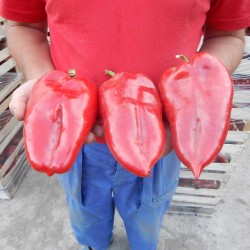
1100+ magok óriás paprika...
Ár
17,00 €
(SKU: VE 92 (9g))
Seeds Gallery EU,
5/
5
<!DOCTYPE html>
<html>
<head>
<meta http-equiv="Content-Type" content="text/html; charset=UTF-8" />
</head>
<body>
<h2><strong>1100+ magok óriás paprika Elefánt fül</strong></h2>
<h2><span style="color: #ff0000;"><strong>Az ár (9g) 1100+ mag csomagolására vonatkozik.</strong></span></h2>
<p>Nagy gyümölcsös, aromás. Az elefántfül Szerbia egyik legkedveltebb szerb fajtája, leginkább "ajvar", "pinđur", töltelék készítéséhez, valamint mélyfagyasztáshoz használják. Jól használható pácoláshoz, grillezéshez, zöldséges ételekhez, húsos ételekhez és salátaként.</p>
<p>Ízében kiváló.</p>
<p>Az Elephant's Ear édes paprika, nagyon nagy és húsos gyümölcsökkel. A gyümölcs színe éréskor sötétzöldről élénkpirosra változik. Eléri a súlyát 150-350gr. Nagyon betegség-ellenálló, és hektáronként 50/60 tonna stabil hozamot biztosít. Ez a fajta alkalmas az üvegházhoz, a hideg keretekhez és a szabadban is.</p>
</body>
</html>
VE 92 (9g)


Szerbiából származó fajta

Garden Sunflower Seeds...
Ár
1,95 €
(SKU: P 13)
Seeds Gallery EU,
5/
5
<!DOCTYPE html>
<html>
<head>
<meta http-equiv="Content-Type" content="text/html; charset=UTF-8" />
</head>
<body>
<h2><strong>Garden Sunflower Seeds Multi-Color</strong></h2>
<h2><span style="color: #ff0000;"><strong>Price for Package of 10 seeds.</strong></span></h2>
<p>You have never seen a sunflower with such colors! Our multicolored sunflower! It's absolutely stunning in vases and in the garden. Variety of sunflower with small flowers (5 to 15 cm), with different colors (yellow, brown, orange, lemon yellow, ...) giving many flowers, 15 per plant, but which do not all bloom at the same time, which allows having flowers for about a month from the beginning to the end of flowering.</p>
<p>The plants are well-branched for cutting and are pollen-free so that they do not stain your furniture. Grow in average well-drained garden soil in full sun. Grow up to 2 meters tall, so choose the right place so as not to shade other sun-loving plants.</p>
<p>Adapts quite well on any type of soil</p>
<p>Small advice on cultivation: Maximum sunshine, loose soil, fertilizer of your choice (mineral fertilizer, nettle manure, compost, etc.)</p>
<p>g plants.</p>
</body>
</html>
P 13


Szerbiából származó fajta
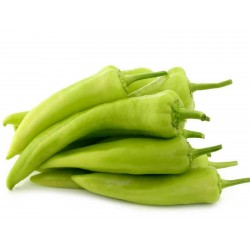
Sweet Pepper Seeds ECSTASY
Ár
2,45 €
(SKU: PP 57)
Seeds Gallery EU,
5/
5
<h2><strong>Sweet Pepper Seeds ECSTASY</strong></h2>
<h2><span style="color: #ff0000;"><strong>Price for Package of 20 seeds.</strong></span></h2>
<p>ECSTASY is a very early variety from Serbia with long fruits intended for cultivation in greenhouses and in the open field. The fruits reach a length of 25-30 cm. The fruits are sweet and delicious. In the greenhouse, the plants grow up to 170 cm in height.</p>
<p><strong>Fruit Weight:</strong> 130 g</p>
<p><strong>Fruit length:</strong> 25-30 cm.</p>
<p><strong>Serbian Variety</strong></p>
PP 57 (20 S)


Óriás növény (óriás gyümölcsökkel)

Oroszországból származó fajta

Bosznia-Hercegovinából származó fajta

Szerbiából származó fajta

Görögországból származó fajta

Olasz fajta


Become our seed supplier
Ár
0,00 €
(SKU: )
Seeds Gallery EU,
5/
5
<!DOCTYPE html>
<html>
<head>
<meta http-equiv="Content-Type" content="text/html; charset=UTF-8" />
</head>
<body>
<h2><strong>Become our seed supplier</strong></h2>
<h2><strong>What does it take to become our seed supplier?</strong></h2>
<p>In order to become our supplier, you need to have a video and pictures of the fruits of the plants you offer us, with your personal details and a date on paper that will be clearly visible (with your name and email address you use for PayPal).</p>
<p>If it is a vegetable (tomato, pepper, cucumber ...) you need to know the exact name of the variety, because if you use any other name and we cannot find the information on the internet, then we are not interested in those seeds.</p>
<p>You will need to send us a smaller amount of seed (20) so that we can perform seed germination testing. After that, we can arrange a further purchase of the seed from you.</p>
<p>We make payments exclusively through PayPal (there is no other payment option).</p>
</body>
</html>


Szerbiából származó fajta
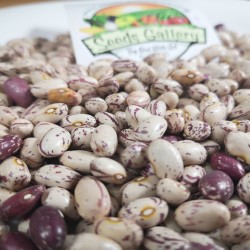
Serbian colorful bean seeds
Ár
1,35 €
(SKU: VE 45 SP (10g))
Seeds Gallery EU,
5/
5
<h2>Serbian colorful bean seeds</h2>
<h2><span style="color: #ff0000;" class=""><strong>Price for Package of 20 (10g) seeds.</strong></span></h2>
<p>Serbian colorful beans are very popular in Serbia. The plants are strong and do not need any special care. Today there are more varieties of colorful beans from conventional cultivation. However, it is a former variety of colorful beans, which was sown in Serbia before 1920. It has a great genus and very good taste. It is specific for all colorful varieties to have a grain of red in color, that is a completely normal occurrence. The taste and quality are excellent. The variety is low, it does not need support.</p>
<p>Great variety for cooking, canning, and salads.</p>
<p>The absolute weight of 1000 grains amounts to 330-380 g.</p>
<p>Sowing:</p>
<p>Optimal sowing period: April</p>
<p>Sowing depth: 4 - 5 cm</p>
<p>Distance between rows: 50 cm</p>
<p>Distance in a row: 5 cm</p><script src="//cdn.public.n1ed.com/G3OMDFLT/widgets.js"></script>
VE 45 SP (10g)


Szerbiából származó fajta
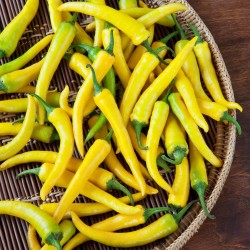
Serbian hot chilli 150+...
Ár
2,85 €
(SKU: C 12 YF (1g))
Seeds Gallery EU,
5/
5
<h2><strong>Serbian hot chilli Seeds "Yellow feferona"</strong></h2>
<h2><span style="color: #ff0000;"><strong>The price is for package of 150+- (1g) seeds.</strong></span></h2>
<p><span style="font-size: 11pt;">In our opinion, it is very similar to Golden Cayenne, but with much more SHU. Our "Yellow Feferona" chili , originally from Serbia, is a beautiful variety which is very suitable for drying. It is interesting that in Serbia, the chili culture is widespread. </span></p>
<p><span style="font-size: 11pt;">It can be grown in a pot, but the most productive plants are grown outdoors.</span></p><script src="//cdn.public.n1ed.com/G3OMDFLT/widgets.js"></script>
C 12 YF (1g)


Szerbiából származó fajta
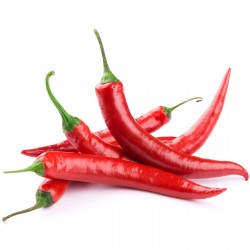
Serbian hot chilli Crvena...
Ár
2,85 €
(SKU: C 12 CF (1g))
Seeds Gallery EU,
5/
5
<!DOCTYPE html>
<html>
<head>
<meta http-equiv="Content-Type" content="text/html; charset=UTF-8" />
</head>
<body>
<h2><strong><span style="font-size: 16pt;">Serbian hot chilli "Crvena feferona"</span></strong></h2>
<h2><span style="color: #ff0000;"><strong><span style="font-size: 16pt;">Price for package of 170+- (1g) seeds.</span></strong></span></h2>
<p><span style="font-size: 11pt;">Our "Crvena feferona" chili , originally from Serbia, is a beautiful variety which is very suitable for drying. It does not lose its bright red color after drying. It is interesting that in Serbia, the chili culture is widespread.</span></p>
<p><span style="font-size: 11pt;">It can be grown in a pot, but the most productive plants are grown outdoors.</span></p>
</body>
</html>
C 12 CF (1g)


Szerbiából származó fajta

A növény ellenáll a hidegnek és a fagynak
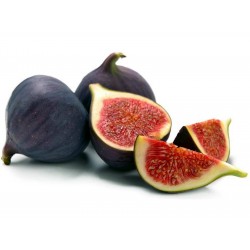
Common Fig Seeds (Ficus...
Ár
1,95 €
(SKU: V 19 CF)
Seeds Gallery EU,
5/
5
<!DOCTYPE html>
<html>
<head>
<meta http-equiv="Content-Type" content="text/html; charset=UTF-8" />
</head>
<body>
<h2><strong>Common Fig Seeds (Ficus carica)</strong></h2>
<h2><span style="color: #ff0000;"><strong>Price for Package of 100 (0.05g) seeds.</strong></span></h2>
<p>The common fig (Ficus carica) is a species of flowering plant in the genus Ficus, from the family Moraceae, known as the common fig (or just the fig), anjeer (Iran, Pakistan), and dumur (Bengali). It is the source of the fruit also called the fig, and as such is an important crop in those areas where it is grown commercially. Native to the Middle East and western Asia, it has been sought out and cultivated by man since ancient times, and is now widely grown throughout the temperate world, both for its fruit and as an ornamental plant.</p>
<p><strong>Description</strong></p>
<p>It is a gynodioecious (functionally dioecious),[3] deciduous tree or large shrub, growing to a height of 6.9–10 metres (23–33 ft), with smooth white bark. Its fragrant leaves are 12–25 centimetres (4.7–9.8 in) long and 10–18 centimetres (3.9–7.1 in) across, and deeply lobed with three or five lobes. The complex inflorescence consists of a hollow fleshy structure called the syconium, which is lined with numerous unisexual flowers. The flower itself is not visible outwardly, as it blooms inside the infructescence. Although commonly referred to as a fruit, the fig is actually the infructescence or scion of the tree, known as a false fruit or multiple fruit, in which the flowers and seeds are borne. It is a hollow-ended stem containing many flowers. The small orifice (ostiole) visible on the middle of the fruit is a narrow passage, which allows the specialized fig wasp Blastophaga psenes to enter the fruit and pollinate the flower, whereafter the fruit grows seeds. See Ficus: Fig pollination and fig fruit.</p>
<p>The edible fruit consists of the mature syconium containing numerous one-seeded fruits (druplets).[3] The fruit is 3–5 centimetres (1.2–2.0 in) long, with a green skin, sometimes ripening towards purple or brown. Ficus carica has milky sap (laticifer). The sap of the fig's green parts is an irritant to human skin.</p>
<p><strong>Habitat</strong></p>
<p>The common fig tree has been cultivated since ancient times and grows wild in dry and sunny areas, with deep and fresh soil; also in rocky areas, from sea level to 1,700 meters. It prefers light and medium soils, requires well-drained soil, and can grow in nutritionally poor soil. Like all fig trees, Ficus carica requires wasp pollination of a particular species of wasp (Blastophaga psenes) to produce seeds. The plant can tolerate seasonal drought, and the Middle Eastern and Mediterranean climate is especially suitable for the plant. Situated in a favorable habitat, old specimens when mature can reach a considerable size and form a large dense shade tree. Its aggressive root system precludes its use in many urban areas of cities, but in nature helps the plant to take root in the most inhospitable areas. Common fig tree is mostly a phreatophyte that lives in areas with standing or running water, grows well in the valleys of the rivers and ravines saving no water, having strong need of water that is extracted from the ground. The deep-rooted plant searches groundwater, in aquifers, ravines, or cracks in the rocks. The fig tree, with the water, cools the environment in hot places, creating a fresh and pleasant habitat for many animals that take shelter in its shade in the times of intense heat.</p>
<p><strong>Ecology</strong></p>
<p>Ficus carica is dispersed by birds and mammals that scatter their seeds in droppings. Fig fruit is an important food source for much of the fauna in some areas, and the tree owes its expansion to those that feed on its fruit. The common fig tree also sprouts from the root and stolon issues.</p>
<p>The infructescence is pollinated by a symbiosis with a kind of fig wasp (Blastophaga psenes). The fertilized female wasp enters the fig through the scion, which is a tiny hole in the crown (the ostiole). She crawls on the inflorescence inside the fig and pollinates some of the female flowers. She lays her eggs inside some of the flowers and dies. After weeks of development in their galls, the male wasps emerge before females through holes they produce by chewing the galls. The male wasps then fertilize the females by depositing semen in the hole in the gall. The males later return to the females and enlarge the holes to facilitate the females to emerge. Then some males enlarge holes in the scion, which enables females to disperse after collecting pollen from the developed male flowers. Females have a short time (<48 hours) to find another fig tree with receptive scions to spread the pollen, assist the tree in reproduction, and lay their own eggs to start a new cycle.</p>
<p><strong>History</strong></p>
<p>The edible fig is one of the first plants that was cultivated by humans. Nine subfossil figs of a parthenocarpic type dating to about 9400–9200 BC were found in the early Neolithic village Gilgal I (in the Jordan Valley, 13 km north of Jericho). The find predates the domestication of wheat, barley, and legumes, and may thus be the first known instance of agriculture. It is proposed that they may have been planted and cultivated intentionally, one thousand years before the next crops were domesticated (wheat and rye).[5]</p>
<p>Figs were also a common food source for the Romans. Cato the Elder, in his De Agri Cultura, lists several strains of figs grown at the time he wrote his handbook: the Mariscan, African, Herculanean, Saguntine, and the black Tellanian (De agri cultura, ch. 8). The fruits were used, among other things, to fatten geese for the production of a precursor of foie gras.</p>
<p>It was cultivated from Afghanistan to Portugal, also grown in Pithoragarh in the Kumaon hills of India and from the 15th century onwards, was grown in areas including Northern Europe and the New World.[1] In the 16th century, Cardinal Reginald Pole introduced fig trees to Lambeth Palace in London.</p>
<p><strong>Cultivation</strong></p>
<p>The common fig is grown for its edible fruit throughout the temperate world. It is also grown as an ornamental tree, and the cultivar 'Brown Turkey' has gained the Royal Horticultural Society's Award of Garden Merit.[6]</p>
<p>Figs can be found in continental climates with hot summers as far north as Hungary and Moravia, and can be harvested up to four times per year. Thousands of cultivars, most named, have been developed as human migration brought the fig to many places outside its natural range.</p>
<p>Two crops of figs are potentially produced each year.[7] The first or breba crop develops in the spring on last year's shoot growth. In contrast, the main fig crop develops on the current year's shoot growth and ripens in the late summer or fall. The main crop is generally superior in both quantity and quality to the breba crop. However, some cultivars produce good breba crops (e.g., 'Black Mission', 'Croisic', and 'Ventura').</p>
<p><strong>There are basically three types of edible figs:</strong></p>
<p> Persistent (or common) figs have all female flowers that do not need pollination; the fruit develop through parthenocarpic means. This is a popular horticulture fig for home gardeners. Adriatic, Black Mission, Brown Turkey, Brunswick, and Celeste are some representative cultivars.</p>
<p> Caducous (or Smyrna) figs require crosspollination by the fig wasp with pollen from caprifigs for the fruit to mature. Some cultivars are Calimyrna (the Great Central Valley Smyrna fig), Marabout, and Zidi.</p>
<p> Intermediate (or San Pedro) figs set an unpollinated breba crop, but need pollination, at least in most regions, for the later main crop. Examples are Lampeira, King, and San Pedro.</p>
<p><strong>Propagation</strong></p>
<p>Figs plants are easy to propagate through several methods. Propagation using seeds is not the preferred method since vegetative methods exist that are quicker and more reliable, that is, they do not yield the inedible caprifigs. However, those desiring to can plant seeds of dried figs with moist sphagnum moss or other media in a zip lock bag and expect germination in a few weeks to several months. The tiny plants can be transplanted out little by little once the leaves open, and despite the tiny initial size can grow to 1 foot (30 cm) or more within one year from planting seeds.</p>
<p>For propagation in the mid-summer months, air layer new growth in August (mid-summer) or insert hardened off 15–25 cm (6-10 inches) shoots into moist perlite or a sandy soil mix, keeping the cuttings shaded until new growth begins; then gradually move them into full sun. An alternative propagation method is bending over a taller branch, scratching the bark to reveal the green inner bark, then pinning the scratched area tightly to the ground. Within a few weeks, roots will develop and the branch can be clipped from the mother plant and transplanted where desired.</p>
<p>For spring propagation, before the tree starts growth, cut 15–25 cm (6-10 inches) shoots that have healthy buds at their ends, and set into a moist perlite and/or sandy soil mix located in the shade. Once the cuttings start to produce leaves, bury them up to the bottom leaf to give the plant a good start in the desired location.</p>
<p><strong>Culinary use</strong></p>
<p>Figs can be eaten fresh or dried, and used in jam-making. Most commercial production is in dried or otherwise processed forms, since the ripe fruit does not transport well, and once picked does not keep well. The widely produced fig newton or fig roll is a biscuit (cookie) with a filling made from figs.</p>
<p><strong>Nutrition</strong></p>
<p>Figs are among the richest plant sources of calcium and fiber. According to USDA data for the Mission variety, dried figs are richest in fiber, copper, manganese, magnesium, potassium, calcium, and vitamin K, relative to human needs. They have smaller amounts of many other nutrients. Figs have a laxative effect and contain many antioxidants. They are a good source of flavonoids and polyphenols[9] including gallic acid, chlorogenic acid, syringic acid, (+)-catechin, (−)-epicatechin and rutin.[10] In one study, a 40-gram portion of dried figs (two medium size figs) produced a significant increase in plasma antioxidant capacity.</p>
<p>According to the USDA,[12] 100 g of dried, uncooked fruit of the common fig (Ficus carica) contains the following:</p>
<p><strong>Cultural aspects</strong></p>
<p>In the Book of Genesis in the Bible, Adam and Eve clad themselves with fig leaves (Genesis 3:7) after eating the "forbidden fruit" from the Tree of Knowledge of Good and Evil. Likewise, fig leaves, or depictions of fig leaves, have long been used to cover the genitals of nude figures in painting and sculpture. Art collectors and exhibitors often added these depictions long after the original work was completed. The use of the fig leaf as a protector of modesty or shield of some kind has entered the language.</p>
<p>The Book of Deuteronomy specifies the fig as one of the Seven Species (Deuteronomy 8:7-8), describing the fertility of the land of Canaan. This is a set of seven plants indigenous to the Middle East that together can provide food all year round. The list is organized by date of harvest, with the fig being fourth due to its main crop ripening during summer.</p>
<p>Also in the Bible (Matthew 21:18–22 and Mark 11:12–14, 19–21) is a story of Jesus finding a fig tree when he was hungry; the tree only had leaves on it, but no fruit. Jesus, then, curses the fig tree, which withers.</p>
<p>The biblical quote "each man under his own vine and fig tree" (1 Kings 4:25) has been used to denote peace and prosperity. It was commonly quoted to refer to the life that would be led by settlers in the American West, and was used by Theodor Herzl in his depiction of the future Jewish Homeland: "We are a commonwealth. In form it is new, but in purpose very ancient. Our aim is mentioned in the First Book of Kings: 'Judah and Israel shall dwell securely, each man under his own vine and fig tree, from Dan to Beersheba".</p>
<p> </p>
<p>Buddha achieved enlightenment under the bodhi tree, a large and old sacred fig tree (Ficus religiosa, or Pipal).</p>
<p>Sura 95 of the Qur'an is named al-Tīn (Arabic for "The Fig"), as it opens with the oath "By the fig and the olive." The fruit is also mentioned elsewhere in the Qur'an. Within the Hadith, Sahih al-Bukhari records Prophet Muhammad stating: "If I had to mention a fruit that descended from paradise, I would say this is it because the paradisiacal fruits do not have pits...eat from these fruits for they prevent hemorrhoids, prevent piles and help gout."[15]</p>
<p>In Greek mythology, the god Apollo sends a crow to collect water from a stream for him. The crow sees a fig tree and waits for the figs to ripen, tempted by the fruit. He knows that he is late and that his tardiness will be punished, so he gets a snake from the stream and collects the water. He presents Apollo with the water and uses the snake as an excuse. Apollo sees through the crow's lie and throws the crow, goblet, and snake into the sky where they form the constellations Hydra, Crater, and Corvus.</p>
<p>In Aristophanes' Lysistrata one of the women boasts about the "curriculum" of initiation rites she went through to become an adult woman (Lys. 641–7). As her final accomplishment before marriage, when she was already a fair girl, she bore the basket as a kanephoros, wearing a necklace of dried figs.</p>
<p>In the course of his campaign to persuade the Roman Republic to pursue a third Punic War, Cato the Elder produced before the Senate a handful of fresh figs, said to be from Carthage. This showed its proximity to Rome (and hence the threat), and also accused the Senate of weakness and effeminacy: figs were associated with femininity, owing to the appearance of the inside of the fruit.[17]</p>
<p>The word "sycophant" comes from the Greek word sykophantes, meaning"one who shows the fig". "Showing the fig" was a vulgar gesture made with the hand.</p>
<p>The fig tree is sacred to Dionysus Sukites (Συκίτης).</p>
<p>Since the flower is invisible, there are various idioms related to it in languages around the world. In a Bengali idiom as used in tumi yēna ḍumurēr phul hay.ē gēlē (তুমি যেন ডুমুরের ফুল হয়ে গেলে), i.e., 'you have become (invisible like) the fig flower (doomurer phool)'. The derisive English idiom I don't care a fig probably originates from the abundance of this fruit. There is a Hindi idiom related to flower of fig tree, गूलर का फूल (gūlar kā phūl i.e. flower of fig) means something that just would not ever see i.e. rare of the rarest[19] In Awadh region of Uttar Pradesh state of India apart from standard Hindi idiom a variant is also used; in the region it is assumed that if something or work or job contains (or is contaminated by) flower of fig it will not get finished e.g. this work contains fig flower i.e. it is not getting completed by any means.</p>
<p>Gular ka phool (flower of fig) is a collection of poetry in written in Hindi by Rajiv Kumar Trigarti.[20]</p>
<p>There is also a poem in Telugu written by Yogi Vemana, which says "Medi pandu chuda melimayyi undunu, potta vippi chuda purugulundunu", It means—"The fig fruit looks harmless but once you open you find tiny insects [refers to the fig wasp] in there". The phrase is synonymous to an English phrase—"Don't judge a book by its cover".</p>
</body>
</html>
V 19 CF (0,05g)


Óriás növény (óriás gyümölcsökkel)

Szerbiából származó fajta

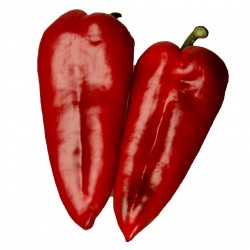
Vörös kürt Paprika magjai...
Ár
1,65 €
(SKU: P 11)
Seeds Gallery EU,
5/
5
<meta http-equiv="Content-Type" content="text/html; charset=UTF-8" />
<h2><strong>Vörös kürt Paprika magjai (Crvena Roga)</strong></h2>
<h2><span style="color: #ff0000;"><strong>30 magos csomag ára.</strong></span></h2>
<p>Édes paprikafajta, amely a hazai szerb paprikafajtákból származik (Nem hibrid). Nagy hozamú fajta, gyümölcsenként 160-350 gramm tömegű. A töltött hús gyümölcse nagyon édes, ez a fajta paprika különféle célokra alkalmas a konyhában, grillezéshez, töltelékhez, salátákhoz és ajvarhoz. A növény nagyon dús, sötétzöld levelekkel, kiválóan alkalmas kültéri és üvegházi termesztésre. Ez a fajta körülbelül 10 nap alatt érik meg korábban.</p>
<p>Ennek a fajtának a hozama rendkívüli, 100 négyzetméteres területen ez a fajta 500-800 kg gyümölcshöz képes hozzájárulni, ami fenomenális hozam. Természetesen ez jó megtermékenyítéssel, öntözéssel igaz ...</p>
<p>A fajta ellenáll a betegségnek, amely általában a paprikát támadja.</p>
P 11 (30 S)


Szerbiából származó fajta

A növény ellenáll a hidegnek és a fagynak
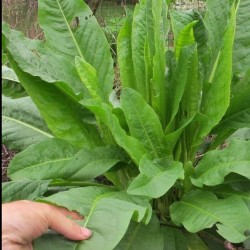
Magok Rumex patientia
Ár
2,45 €
(SKU: VE 210)
Seeds Gallery EU,
5/
5
<h2><strong>Magok Rumex patientia</strong></h2>
<h2><span style="color: #ff0000;" class=""><strong>Az 100 mag csomagjának ára.</strong></span></h2>
<p>A Rumex patientia a Rumex nemzetség lágyszárú évelő növényfaja, amely a Polygonaceae családba tartozik. Tavasszal gyakran leveles zöldségként fogyasztják Dél-Európában, különösen Bulgáriában, Észak-Macedóniában és Szerbiában. Romániában tavaszi húslevesekben is használják.</p>
<p>A levelek ismertek és nagyra értékelik a hagyományos konyhában, nyersen vagy főzve is fogyaszthatók, de oxálsavat tartalmaznak, ezért nem szabad túlzottan fogyasztani (pl. Minden nap). A levelek nyersen felhasználhatók salátákba, levesekbe főzhetők, vagy sült ételekhez, például lasagnához rétegezhetők. A levelek magas ásványi anyagokat tartalmaznak, és bármikor betakaríthatók.</p>
<p>A Rumex patientia fogyasztása stimulálja a mentális és fizikai energiát, miközben gátat szab a fogszuvasodást okozó baktériumoknak, ezeket a tulajdonságokat tudományos kutatások és tanulmányok támasztják alá.</p>
<p>Ültetett szárú, 140 cm magasságú növény. A szár vastag, barázdált, a felső részén elágazó.</p>
<p>A vegetáció során 2-3 alkalommal betakarítják. Az öntözés és az etetés körülményei között 3-4 évig ugyanazon a helyen nőhet. Védett területen és nyílt terepen történő termesztésre alkalmas.</p>
<p>Mire jó?</p>
<p>Hasmenés kezelése: A hasmenés kezelésében, amely a Rumex patientia előnyei közé tartozik, a növény gyökereiből és leveleiből készített teát kell inni.</p>
<p>Nőgyógyászat: Meg kell állapítani, hogy a csak a növény gyökereiből készített tea jó a nőgyógyászati megbetegedések ellen, amelyek a Rumex patientia előnyei közé tartoznak.</p>
<p>Erősítés: Bár ki kell használni a Rumex patientia erősítő hatását, a növény friss leveleit nyersen vagy étkezésként kell megenni.</p>
<p>Tályog és források kezelése: Labada levelekből készített kása tályogjai; Bár vannak információk arról, hogy gyógyítja a forrásokat és meggyógyítja a sebeket, azonban a Rumex patientia leveléből készített kása külső felhasználása szükséges.</p>
<p>Aranyérkezelés és székrekedés: Azok, akik főzték a Labada leveleket, részesültek a Rumex patientia előnyeiben az aranyér kezelésében és a székrekedés kezelésében.</p>
<p>Reumás fájdalmak: Reumás fájdalmak esetén, amely a Rumex patientia egyik előnye, a Rumex patientia friss leveleit ecettel öntik; és külsőleg kell alkalmazni a fájdalmas helyeken.</p>
<p>Használat: A növény leveleit nyersen vagy 50 g / 1 liter forró vízben fogyasztják. Tegye a leveleket édesvízbe és forralja 15-20 percig. Így egy pohár teát naponta kétszer vagy háromszor vesznek be.</p>
<p>Bőrbetegségek esetén hatékony.<br />Éretté teszi a forrásokat.<br />Gyógyítja a sebeket és az ekcémát.</p>
<p>Használat: A borogatást a növény leveleivel készítik el, és külsőleg alkalmazzák a panaszolt területeken.</p>
<p>A root előnyei:<br />Hashajtó hatása van.</p>
<p>Felhasználás: 30-50 g 1 liter forró vízben. Megtisztítjuk, hozzáadjuk a zúzott növény gyökerét, és lassan 15-20 percig forraljuk. A kapott teát naponta kétszer-háromszor isszák.</p>
<script src="//cdn.public.n1ed.com/G3OMDFLT/widgets.js"></script>
VE 210 (100 S)





